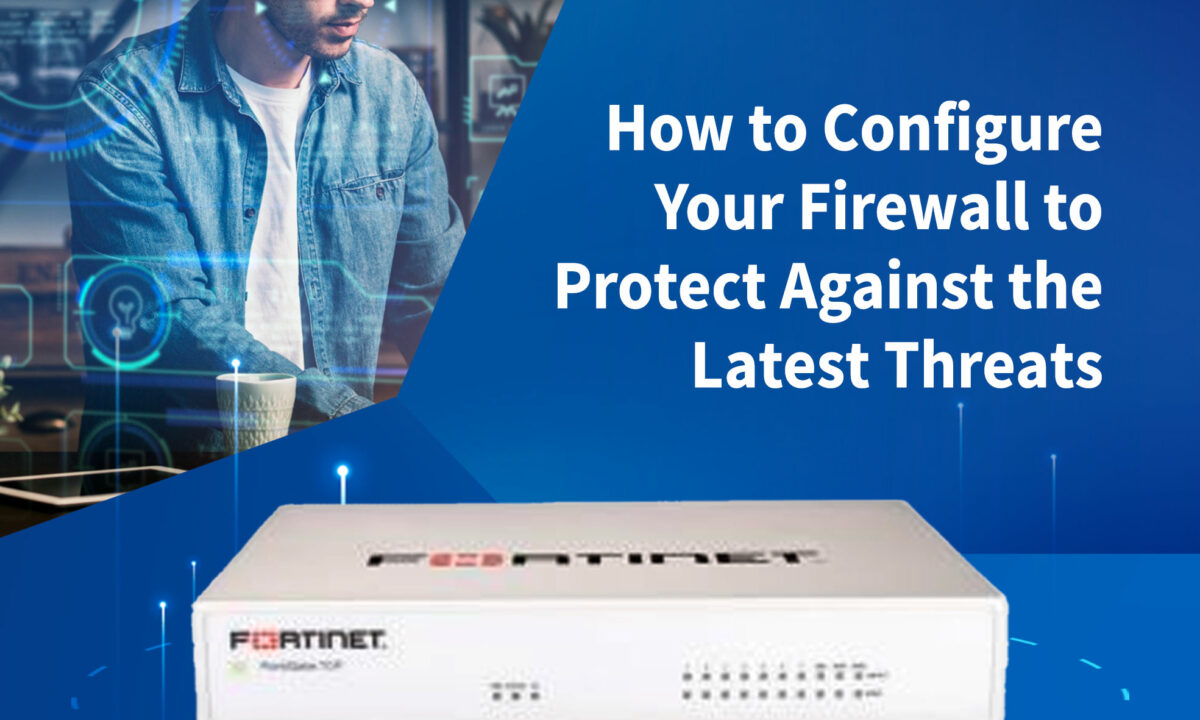Blog

How to Configure Your Firewall to Protect Against the Latest Threats
Cybersecurity is the need of the hour as cyber threats are evolving at an alarming pace, the firewall in UAE stands as the key solution for your digital domain. Configuring the factors in this will help you safeguard your network against the ever-changing tactics of cyber adversaries.
Stay Informed
Understanding the current threat landscape is the foundation of effective firewall configuration. Regularly update yourself on the latest cybersecurity threats, vulnerabilities, and attack methodologies. This knowledge will empower you to tailor your firewall settings to address specific risks that might be prevalent in the current cybersecurity problems.
Default Deny
Implement a default-deny rule as the cornerstone of your firewall configuration. This means denying all traffic by default and only allowing specific, necessary traffic through. This proactive approach ensures that any unexpected or potentially harmful traffic is blocked at the gateway, offering a strong initial defense against a wide array of threats.
Application Layer Inspection
Traditional firewalls focus on packet-level filtering, but modern threats often exploit vulnerabilities at the application layer. Configure your firewall to inspect traffic at the application layer, allowing it to discern legitimate application traffic from malicious attempts to exploit vulnerabilities. This layer of security adds an extra shield against sophisticated attacks.
Update Regularly
Maintaining an up-to-date firewall is as critical as installing one in the first place. Regularly update your firewall software and firmware to ensure that it has the latest threat intelligence, security patches, and performance enhancements. Outdated firewalls are akin to having a sturdy gate with a rusty lock – it may look formidable, but it won’t provide the necessary protection.
Intrusion Prevention Systems (IPS)
Integrate an Intrusion Prevention System into your firewall configuration. IPS acts as an intelligent sentry, analyzing network and/or system activities for malicious exploits or security policy violations. By configuring your firewall to include IPS, you create a proactive defense mechanism that can identify and stop potential threats before they can breach your network.
User-Based Policies
Not all users within your network require the same level of access or permissions. Configure your firewall to implement user-based policies, allowing you to customize security settings based on individual user roles. This not only enhances security but also streamlines network management by ensuring that each user has precisely the access they need – no more, no less.
Logging and Monitoring
Configure your firewall to log and monitor network activities rigorously. This provides a comprehensive record of traffic patterns, potential threats, and security events. Regularly review these logs to identify anomalies or suspicious activities, enabling you to take preemptive action before a minor threat escalates into a major breach.
Configuring your Fortinet firewall in Dubai to protect against the latest threats is a proactive measure that adapts your defenses to the ever-changing cybersecurity landscape. By following these tips, you can ensure that your firewall is a dynamic shield capable of withstanding the most sophisticated attacks. Regular updates, user-based policies, and vigilant monitoring are the finishing touches that solidify your digital fortress, making it resilient against the relentless tide of evolving cyber threats.

